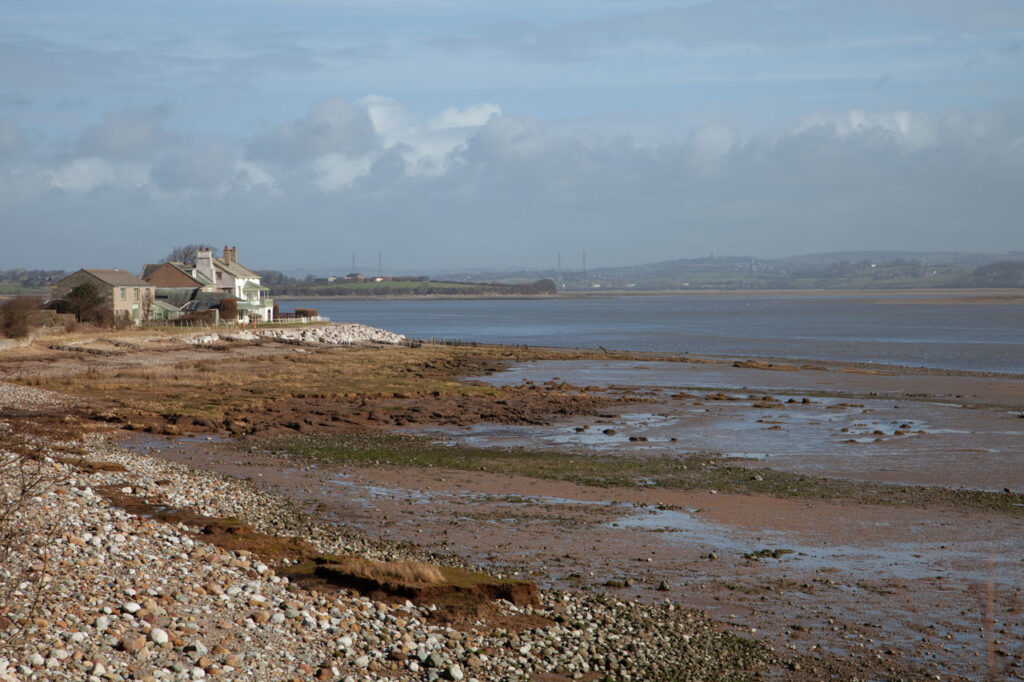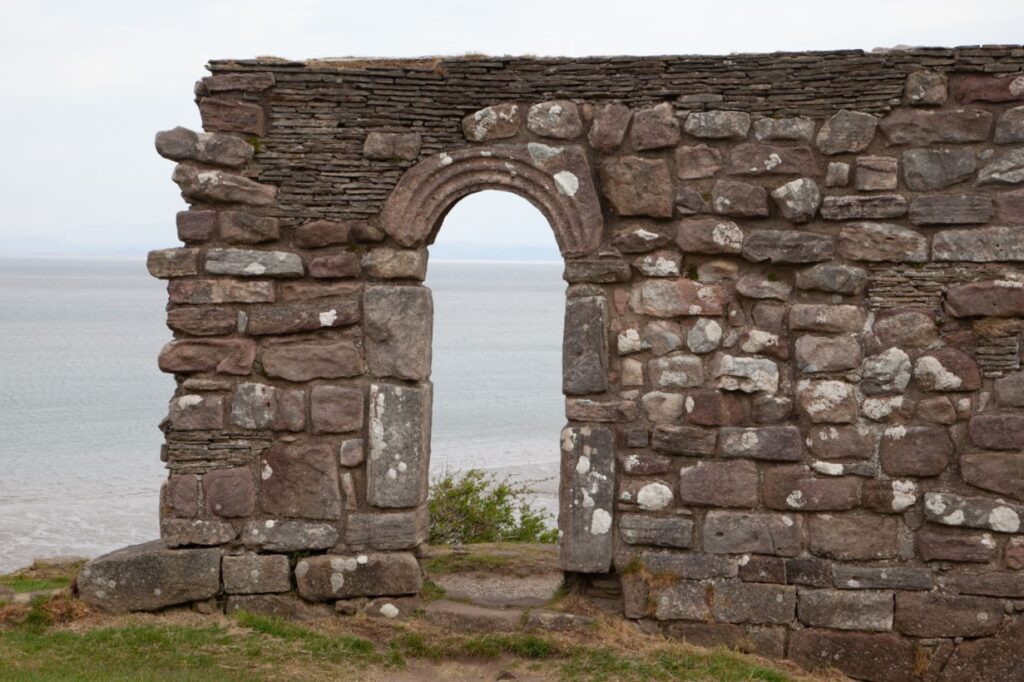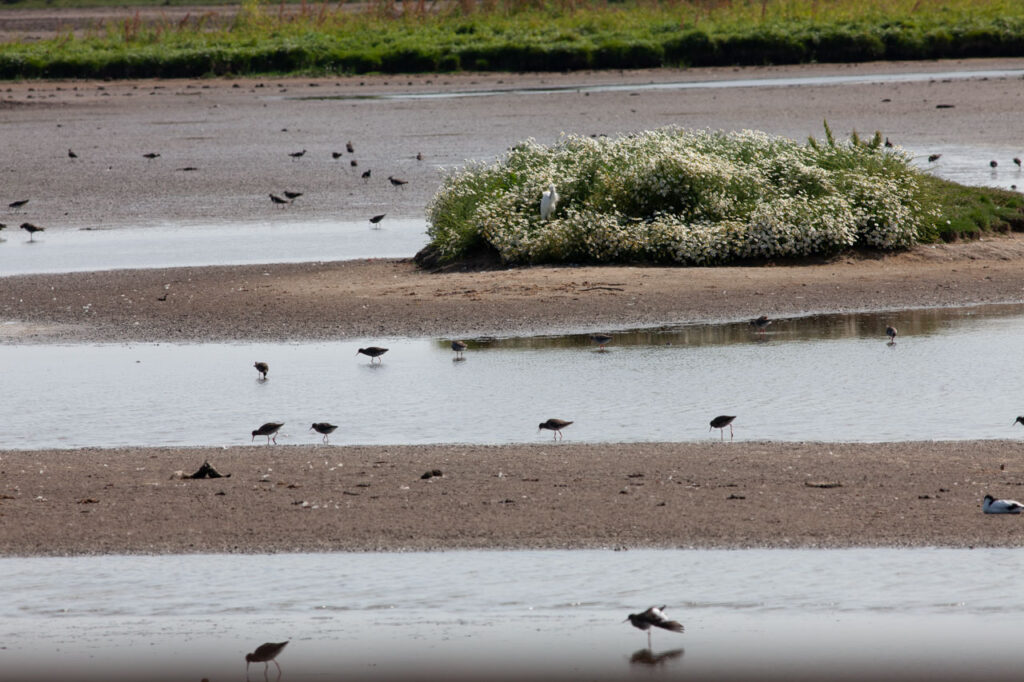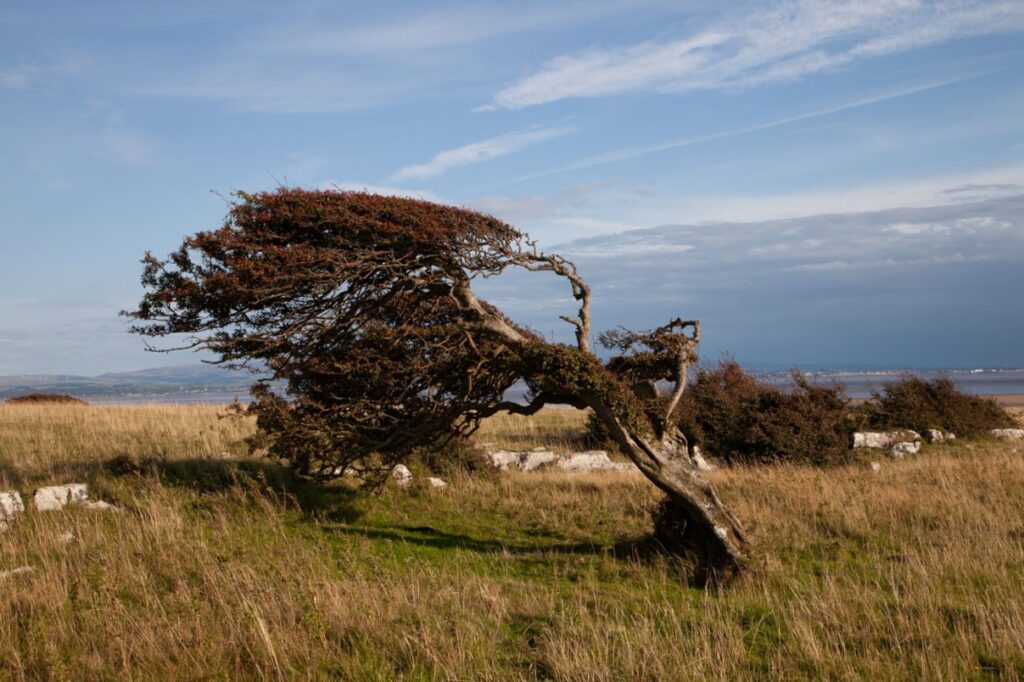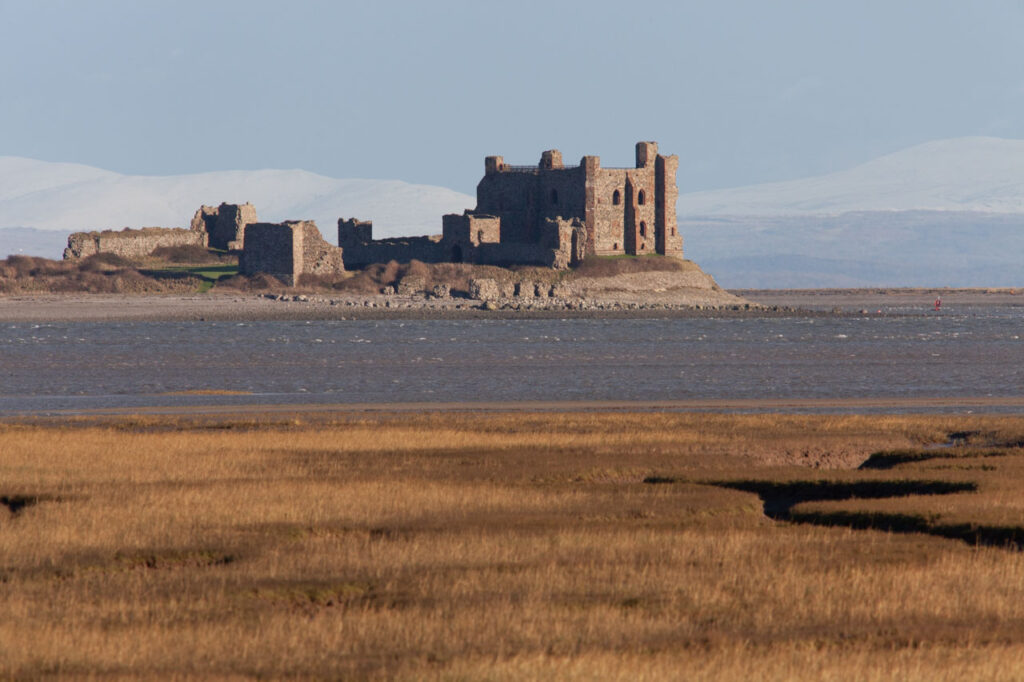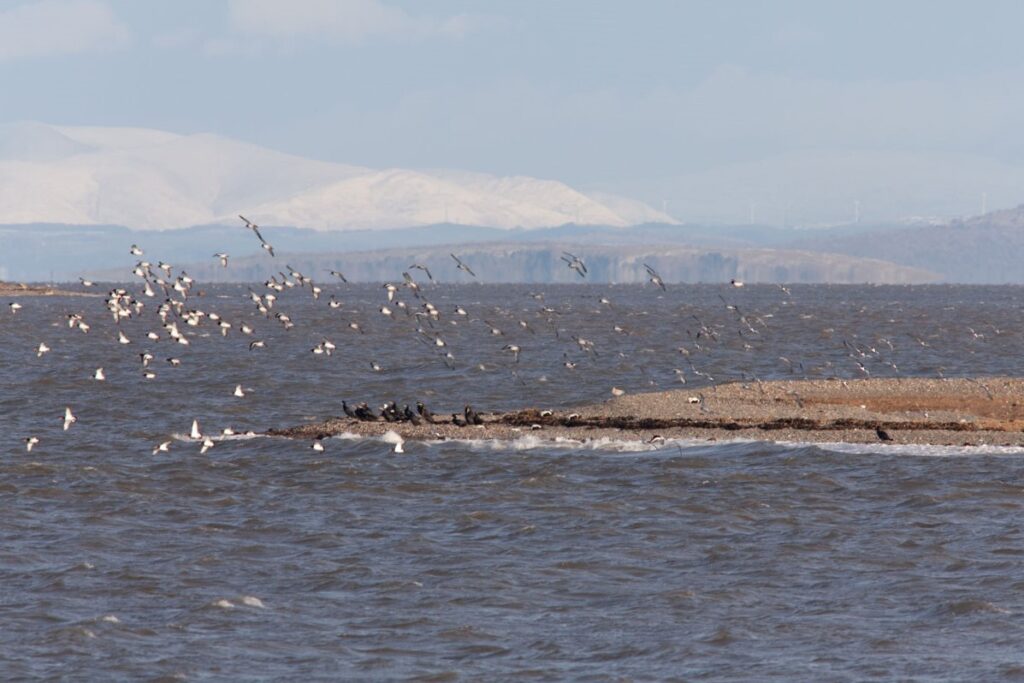Having written a travel guide to the Cumbria and Lake District Coast, I thought that I’d give my thoughts on 10 of the best sights off the beaten track around Morecambe Bay.
The bay stretches from Fleetwood in Lancashire to Walney Island in Cumbria, and is a spectacular place to visit due to its history, wildlife and the ever changing views due to the ebb and flow of the tides. At low tide it has the largest continuous intertidal area in the UK, covering about 120 square miles.
Read on for some more unusual sights beyond the main tourist attractions, including some that I found surprising when researching the guide.
1. Williamson Park
In no particular order, I’ll begin with Williamson Park in Lancaster, which is one of the few places around the Lancashire shores where you can see out across the bay, right across to the fells of the Lake District.
It’s also a beautiful spot to visit in its own right, with the Ashton Memorial, a butterfly house, a mini zoo, a pavilion café and woodland walks.
The park is situated to the east of the city centre, where other attractions include Lancaster Castle and the city and maritime museums.
2. Sunderland Point
Out towards the coast, Sunderland Point lies at the mouth of the estuary of Lancaster’s river, the Lune. Until the mid-18th century it was the main port for Lancaster, before channel improvements were made to allow larger ships to travel further upstream.
It’s a remote and beautiful spot, where the access road is cut off at high tide, so check warning signs and tide times before making the crossing. You can sometimes see the Lune Tidal Bore pass near here on the highest tides.
And there’s a lovely walk around the coast to Sambo’s Grave, a memorial to a slave put ashore nearby in the 18th century.
3. Heysham Head
Heading further round the coast, Heysham is a picturesque village with winding streets and 17th century cottages. Heysham Heritage Centre has a wealth of information on the area.
Heysham Head lies nearby with great views across the bay and the ruins of St Patrick’s Chapel and rock cut graves, which are thought to date from the 8th century.
There are great views toward Morecambe and across the bay from here, and St Peter’s Church nearby dates from the fourteenth century.
4. RSPB Leighton Moss
Morecambe Bay is famed for its birdlife and about a quarter of a million waterbirds gather here at some times of year, to feed on the sands and mudflats exposed at low tide. Species include oystercatchers, curlews, lapwings and avocets.
One of the best places for a sighting is the RSPB’s Leighton Moss reserve, which is an area of reed beds, coastal lagoons, limestone grassland and woodland close to the bay. The main site has a visitor centre, café, shop and observation tower, while the lagoons are a short drive away.
You can also sometimes see otter, bitterns and red deer here, and amazing starling murmurations in autumn and winter. Check the website for recent sightings.
5. Arnside Bore

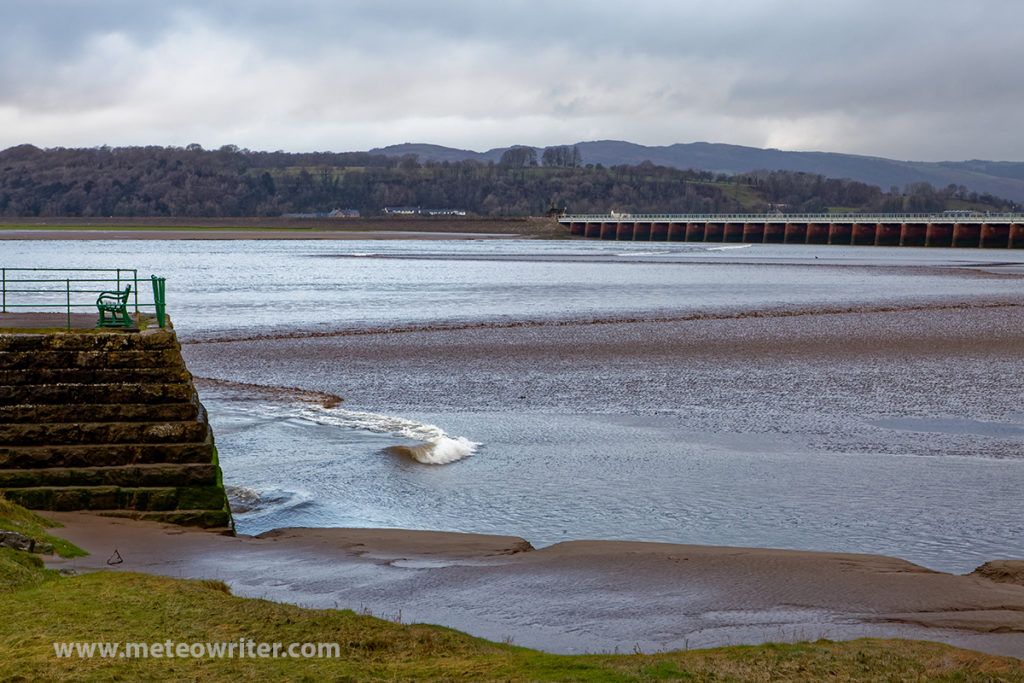
Due to the high tidal range, tidal bores form in several of the estuaries around Morecambe Bay and the Arnside Bore is the best known.
One of the best places to see it is from the promenade and pier in Arnside, and sometimes it makes it past the railway viaduct as far as Sandside and the lowermost reaches of the River Bela.
During the main tourist season, the council sounds a warning siren twice as the tide advances, due to the risks from the tides.
The other tidal bores around the bay are the Leven Tidal Bore, Lune Tidal Bore and Wyre Tidal Bore, while the Duddon Tidal Bore occurs just a short way further around the coast.
6. Humphrey Head
The Arnside Bore occurs in the Kent Estuary and some great places for a view of the estuary include Arnside Knott, Hampsfell and Humphrey Head.
Humphrey Head is perhaps the most intriguing and is a low limestone promontory that juts out into the bay. It’s a pleasant walk along its grassy top, with wildflowers nestling in the rocks and cliffside views to one side.
Its hawthorn trees are one of its famous sights, with some with outstretched branches in the direction of the prevailing wind.
7. Sir John Barrow Monument
Many people visit the historic town of Ulverston but if you can its worth walking up to the Sir John Barrow Monument nearby.
Modelled on the Eddystone Lighthouse, it commemorates the 19th century scientist, writer and explorer John Barrow, who was born in the town.
His extraordinary career included postings to China and South Africa, being Second Secretary to the Admiralty, and being a founder member of the Royal Geographical Society.
The surrounding park is a great viewpoint for Ulverston and Morecambe Bay, and the monument is sometimes open to the public.
8. Piel Castle
Turning now to one of the most dramatic sites around Morecambe Bay, we have Piel Castle which was built in the fourteenth century.
This lies on Piel Island, which is close to Barrow-in-Furness, and is accessible by ferry from Roa Island. Now managed by English Heritage, it was originally built as a fortified store for products in transit to or from nearby Furness Abbey, such as grain, wine, wool and pig iron.
There’s a popular pub on the island, the Ship Inn, where by tradition each new landlord is crowned the King of Piel.
9. South Walney Nature Reserve
The southern end of Walney Island marks the westernmost point in Morecambe Bay and Cumbria Wildlife Trust has a fascinating nature reserve there.
It’s a great place for birdwatching and more than 250 species have been recorded. There are some great coastal walks around the reserve, including past lagoons and Walney Lighthouse.
It’s renowned as a nesting ground for eider ducks and there’s a resident population of grey seals, which you can sometimes see swimming near the shore at high tide. A webcam sends images of the haulout site to the Trust’s website and a screen in the visitor centre.
10. Cross Bay Walks

Just to end, I’d like to mention the charity Cross Bay Walks. These make for a fabulous day out and are led across the Kent Estuary by the King’s Guide to the Sands.
They run regularly from spring to autumn and the guide is essential due to the risks from the tides and quicksand.
They’re organized by the Guide over Sands Trust, who also organize walks in the Leven Estuary to Chapel Island.
The routes have been used since medieval times and there was once even a horse-drawn stagecoach service across the sands, taking passengers between Lancaster and Ulverston.
The 10 best sights around Morecambe Bay?
I hope that’s helped to shown some of the less well known sights around Morecambe Bay, beyond the main tourist attractions.
Examples include the beaches of Fleetwood and Morecambe, historic centres such as Lancaster, Cartmel and Ulverston, and popular resorts such as Arnside and Grange-over-Sands. Plus many other great destinations such as Furness Abbey, Sizergh Castle, Holker Hall and Levens Hall.
In saying ’10 best sights around Morecambe Bay’ this is of course just a personal selection and there are many more, making this a fascinating area to visit.
And if you’d like to find out more, there’s more detail in my book The Cumbria and Lake District Coast.
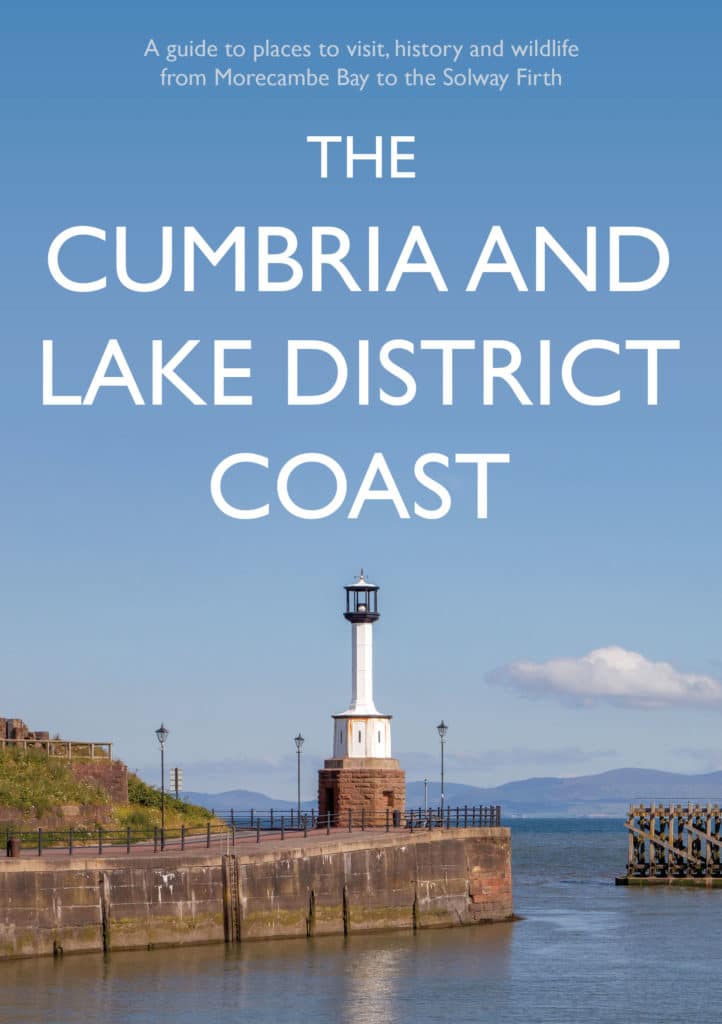
Many of these photographs are from The Cumbria and Lake District Coast. This describes places to visit, history and wildlife along the coast, including many places off the beaten track.
“The path less travelled. Discover a host of secret seaside haunts along a coastline that stretches from Morecambe Bay to the Solway Firth …”
COAST MAGAZINE, BOOK OF THE MONTH, JANUARY 2022
It is available from all good bookstores. See this page or www.troubador.co.uk for more information.

